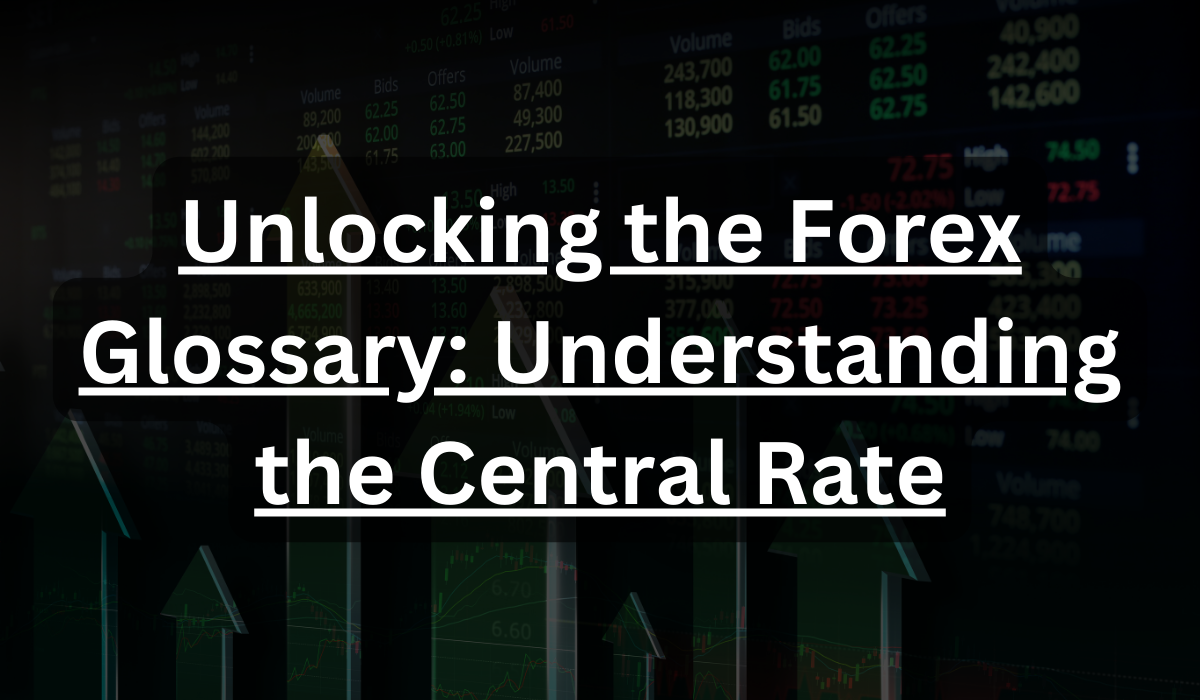When it comes to forex trading, understanding the terminology is essential for success. In this blog post, we will explore the concept of the central rate, its significance in the foreign exchange market, and how it affects currency movements.
Demystifying the Central Rate
The central rate, also known as the central parity rate or the central bank rate, refers to the exchange rate set by the central bank of a country within a managed exchange rate system. In such systems, currencies are allowed to fluctuate within certain bands around the central rate. The central rate acts as a reference point for the value of a currency against another currency or a basket of currencies.
Central rates are typically used in exchange rate mechanisms like the European Exchange Rate Mechanism (ERM) or the Exchange Rate Mechanism II (ERM II). These mechanisms aim to promote stability and reduce volatility in exchange rates between participating countries.
The Role of the Central Rate
The central rate plays several important roles:
- Exchange Rate Management: The central rate serves as a benchmark for managing exchange rate fluctuations. It provides a reference point for determining whether a currency is overvalued or undervalued.
- Stability and Confidence: By establishing a central rate, central banks aim to promote stability and instill confidence in their currency. A stable exchange rate encourages trade, investment, and economic growth.
- Monetary Policy: The central rate is closely linked to a country’s monetary policy. Central banks may adjust the central rate as part of their efforts to control inflation, stimulate exports, or manage economic imbalances.
- Intervention Mechanism: Central banks can intervene in the foreign exchange market to maintain the central rate within the desired band. They may buy or sell their own currency to influence its value and prevent it from deviating significantly from the central rate.
Understanding Currency Movements with the Central Rate
The central rate, along with the band around it, determines the allowable range within which a currency’s value can fluctuate. When a currency approaches the upper or lower limit of the band, central banks may take action to steer the currency back towards the central rate. This intervention can involve buying or selling the currency in the foreign exchange market.
If a currency consistently approaches the upper limit of the band, it indicates that the currency is strengthening or appreciating. In response, the central bank may sell its own currency to increase its supply and lower its value relative to other currencies. Conversely, if a currency nears the lower limit of the band, the central bank may buy its own currency to increase demand and raise its value.
The central rate, therefore, serves as a crucial tool for central banks to manage exchange rate stability and maintain competitiveness in international trade.
Final Thoughts
Understanding the concept of the central rate is vital for navigating the complexities of the forex market. It is a key element in exchange rate mechanisms and plays a significant role in determining currency movements. By grasping the central rate’s importance and its relationship with monetary policy, traders and investors can make informed decisions and take advantage of opportunities in the dynamic world of forex trading.








